
Table of Contents
EDITOR'S NOTE
CLUB CRICKET EDITION
Khalid Mohidin
Founder and Editor - Cricket Fanatics Magazine
For years I’ve been on a journey that took me to a forest of questions.
What is the secret to an efficient cricket pipeline?
Is the domestic system flawed?
Is the gap between domestic cricket and International cricket further from the edge than we first thought?
Or are there other flaws in our system that we maybe have not yet discovered?
It was definitely all the above. So, we have produced a variety of digital magazines exploring our system and uncovered stories in South African Cricket.
In this issue, we deal with another crucial part of our pipeline – the Club Cricket system.
I’m sure that we all as fanatics of this game are constantly reading news about club cricket. There are many reliable sources on the web and social media that do amazing jobs at updating you with your daily content.
But seeing as this is a monthly publication, I wanted to produce something different for you all.
I instantly thought about my team of content creators, coaches and players. I contacted all of the writers that have been involved in the club game – in both Women’s cricket and Men’s cricket.
So I’m feeling quite confident that this will take you on a fascinating, yet unique, journey into the world of club cricket.
Now I do warn you. Some of the stories in this issue will definitely evoke a whole range of emotions, but I do still urge everyone to have their favourite snacks near them as we explore the content that’s inside this issue of Cricket Fanatics Magazine.
I know we don’t do enough content on club cricket – and if you join our Patreon account we will definitely do Exclusive Club cricket content – but I wanted to bring you guys an issue that exclusively features a variety of stories that teaches us lessons that we could use to help the system.
Being a Patreon of cricket is what we all want to achieve, and we hope that we all can work together to achieve that dream.
Anyway, enjoy Issue 23, our first ever issue of club cricket.

BECOME A PATRON
By Khalid Mohidin
A very special announcement that I believe will change the face of the way cricket is supported in South Africa.
Hey, guys! Welcome to Cricket Fanatics Magazine. I would like to welcome you to the first and only fan-driven Cricket publication in South Africa.
I started this venture on 1 July 2019 with a vision to get fans from all walks of life engaged with the game and the personalities in cricket.
We want to tell the untold stories of South African cricket and we want fans to be heard.
Since we started, we covered the Mzansi Super League, Women’s Super League, Proteas Men and Women International Test, ODI and T20I series, as well as school and club cricket, with the aim of providing entertaining, engaging and educational content.
But hasn’t stopped there.
We started a Monthly Magazine where we provide multi-media content, including exclusive features, opinion pieces and analysis.
This works hand-in-hand with our YouTube channel where we produce unique cricket shows that allow fans to call in and have their say.
We have the Daily Show, which reveals all the major talking points in South African cricket.The Sunday Podcast Show where we sit back, relax and engage with the live chat, answering all the questions fans have about us and the game.
We have Off-Side Maidens, the first ever All-Women’s Cricket Show on YouTube, which helps empower women in cricket and gives them a place to share their own views on not only women’s cricket but all cricket.
We have a Legends show, where we interview all legends in cricket.
To produce all of this, we’ve invested a lot of money, time and effort to bring this to you for free.
But to keep this going we need your help. So we have opened a Patreon account.
Today, we are fortunate that technology has enabled anyone to become a patron of creative work, even if they are not a billionaire.
We have therefore launched a campaign for you as a Cricket Fan to become a patron and support us as an independent, bootstrapped publisher.
As a Patron, you also get your voice heard as a Fan.
Plus: You have the opportunity to become more engaged with the content we produce.
Every month we produce at least:
- 60 Website Articles
- 20 Daily Video Shows
- 4 Weekly Podcasts
- Match Previews
- Match Reviews
- Video Interviews
- And more…
So please join our Patreon today.
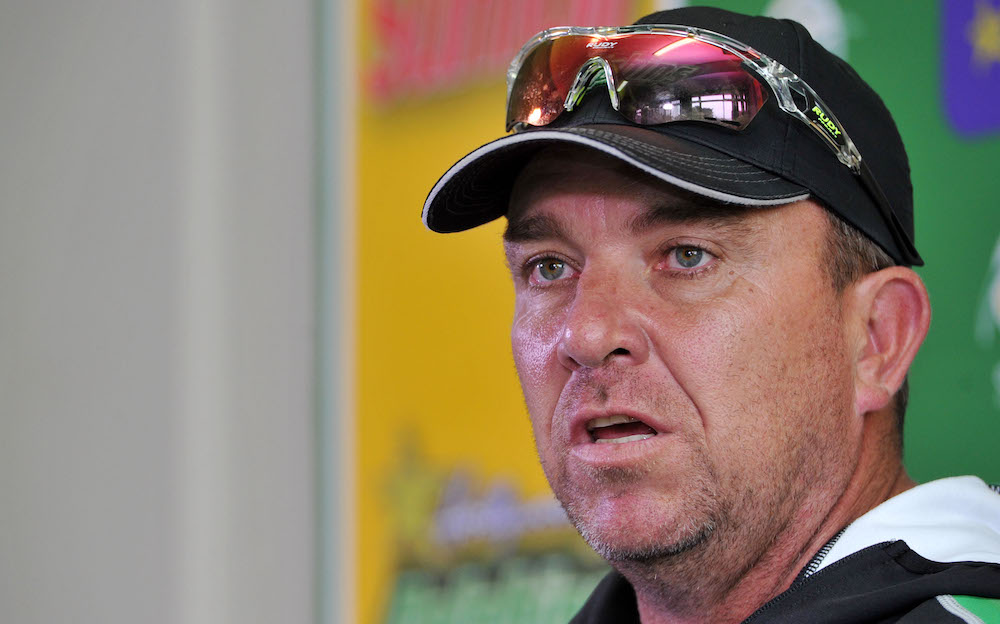
Grant Morgan: We need more youngsters at club level
By Ongama Gcwabe
The 2021/22 season is a thing of the past but has taught us a lot about where we are as a cricketing nation.
The Cricket Fanatics Magazine team has put together a body of work that gives an idea of where we are and where we need to go looking ahead to the 2022/23 season.
To get an idea of how club cricket is doing post-COVID, we spoke to Jendamark United Cricket Club’s coach, Grant Morgan. Morgan joined the club in the 2019/20 season, at the peak of COVID. They finished second in this season’s Premier League 50-over competition.
Club cricket is important given the new domestic structure that was implemented this past season. Club cricket now feeds talent to the Colts teams and then straight to Division One or Division Two teams.
Morgan gave us his insight on the current state of club cricket level.
“Our teams are getting older,” Morgan expressed in an exclusive interview with Cricket Fanatics Magazine.
“The average age of our Premier League is probably over 32. These are good players but we need to develop more youngsters in club cricket.”
In Gqeberha, seeing players score multiple hundreds at club level, is not something that happens often enough. In his two and a half seasons working at club level, coach Morgan has noticed the exact same trend.
“I’m concerned at the moment in the Eastern Cape, especially from a batting point of view,” said Morgan.
“It’s also conditions related but we’re not batting all the overs. You don’t want your 50-over game to be over before half-past one in the afternoon. You want both teams to bat all their overs and have a competitive game.
“You do get those but they’re not happening as often as we want. We’re going to have to work hard because our premier league has been disappointing.”
The talent in the Eastern Cape has never been in doubt but the performances at club level, in particular, can improve now that we are moving on from many COVID related restrictions.
“The talent is there. We’ve had challenges earlier where our facilities were destroyed during COVID,” Morgan added.
“So we had to build a whole new training setup. It was challenging to develop skill because the facilities were not there earlier in the season.”
It is refreshing to see a coach of the calibre of Morgan working at club level. He not only coached at franchise level but also at the international level as well.
A coach with the CV that Morgan has, demands respect and knows how to work with players of different characters. Before COVID, Morgan was on a very different path in his career before eventually coming back to Gqeberha in 2020.
“I was in Scotland with the Scottish National team. Gerald (Majola) and I come a long way. We’ve always had this vision of me coming back and giving putting into the club.
“Also my mom was getting older and with COVID I had to look after her. So when the two met in the middle it was inevitable that I was coming back to give back to the club,” Morgan concluded.
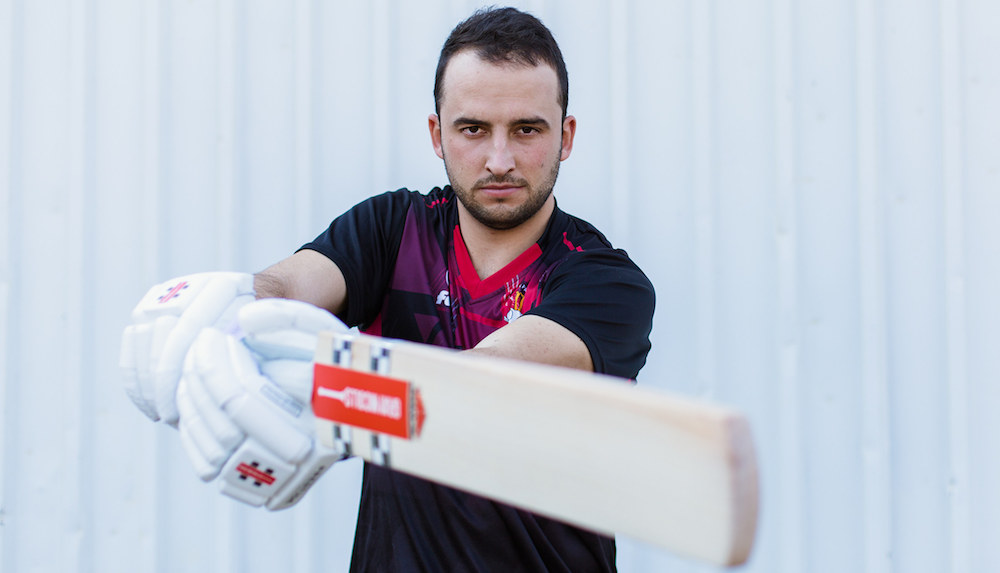
Process between amateur cricket and semi-pro recognition ‘not always clear’
By Marc Jacobson
While acknowledging club cricket in South Africa is “extremely important” for the game, the bridging process between that and semi-professional selections may not always be particularly concrete, so says accomplished all-rounder Tian Koekemoer.
Koekemoer admits that much emphasis is being placed on club cricket, but not necessarily on schoolboy cricket in terms of the crossover to pursuing the sport after matric.
The 27-year-old identifies himself as having “gone through all the stages” to making it to first-class cricket and he is a living testament to how the process can aid one’s development.
He played for Hornbills Cricket Club (Limpopo) and the University of Pretoria after school, before moving down south and playing for Nelson Mandela University (NMU) and Gelvandale Cricket Club in Gqeberha.
The left-hand batter and right-arm medium pacer then went up the coast to play for Hollywood Bets Lancashire in Pietermaritzburg to round off his club journey in SA to date.
Along the way, Koekemoer had earned call-ups to play for Easterns, making his provincial debut in 2015, before representing Eastern Province and KZN Inland later on.
“Club cricket was very important. I played against all the guys from a young age and you learn so much from doing so,” Koekemoer told Cricket Fanatics Magazine. “It’s very important for a youngster’s development.”
He however added that the process became muzzy when talented scholars were seeking the ideal opportunities to play the sport after school.
“I don’t think the process has always been so clear because most of the top guys would skip club cricket – when we still had semi-pro cricket before the franchise system fell away – and they would go to the universities where they were offered sports bursaries. Clubs couldn’t compete [with that],” Koekemoer said.
“You sort of didn’t want to play for a club because it would take you out of selection for a semi-pro team, therefore you wouldn’t be giving yourself the best possible chance.
“You have the Varsity Cup, Club Champs, there’s a T20 Community Cup with the varsities, the USSA [tournaments] – you have all these things you can play as a university cricketer, all while studying at the same time.
“That’s where I think clubs sort of suffer,” he said, noting that it has “gotten better” since the provincial restructuring implemented by Cricket South Africa last year, as the clubs now serve as a feeder system, alongside the university outfits.
“There is a lot more focus and emphasis on club cricket now because they are the feeders to the top team in the province. There is a lot more recognition and exposure given to them now. In the past, there were sort of different avenues in the process to get to the top.
“Now you have to get into the club teams, then colts before making it into the main team. The restructuring has been good in that regard.”
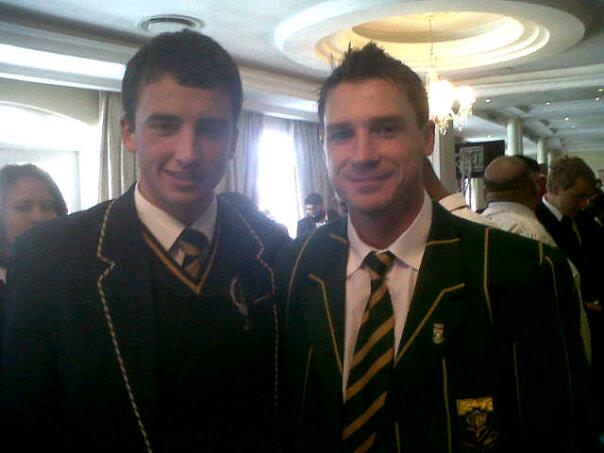
Koekemoer, who attended Hoërskool Merensky in Tzaneen, Limpopo, has had considerable exposure to the different club scenes in different parts of the country.
He said he had played club cricket from a young age, admitting that: “I had learned so much more from playing club cricket than playing for my school team”.
He added that this was where he had fine-tuned his game, from playing against the “older and more experienced guys”.
Playing for Tuks, he was exposed to playing with and against some notable names in SA cricket, saying that that league was “unbelievably competitive”.
With this in mind, Koekemoer said the club scene is different in different parts of the country, which may also complicate the process of gaining the ideal recognition as a young cricketer.
“It sort of fluctuates from province to province. Pretoria’s league is way stronger because there are so many more players. Port Elizabeth (Gqeberha) was difficult with regards to the conditions challenging you, which sort of evened out the good and bad teams.
“Moving to KZN Inland, it is quite competitive, but it’s also a lot smaller once again.”
Although the club environment may seem foggy concerning exposure and identification, Koekemoer believes it is experiencing an upward trajectory as a result of the provincial reorganisation.
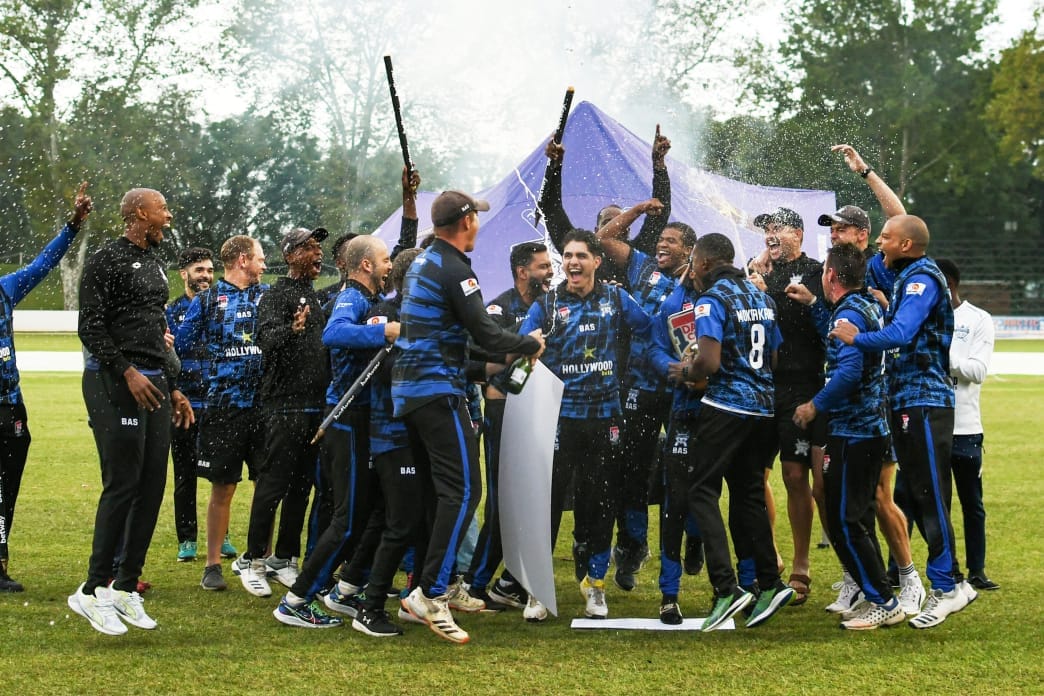
Koekemoer is currently playing club cricket in England, for Tickhill Cricket Club in Doncaster, where he made a name for himself by impressively taking figures of 10/38 against Barnsley Woolley Miners recently, a historic first in the league’s history.
He said club cricket in England is “probably the biggest” worldwide alongside Australia and New Zealand, and those leagues are not professional, therefore transforming it into such, in SA particularly, would most likely not be possible.
“I don’t think it (club cricket) would ever become fully professional, but you can probably get the standard up by getting all these ex-pros and really good club cricketers to make it worthwhile in the sense that you’re creating a good club culture.
“You can make them feel like it’s a club worth playing for and make them feel welcome. If that can get going, while creating a family vibe, I think a lot more people can buy into it and get the most out of it.”
New! Business Corner
Cricket Fanatics Magazine has the visibility, infrastructure, expertise and toolset to promote your brand, business, product or service.
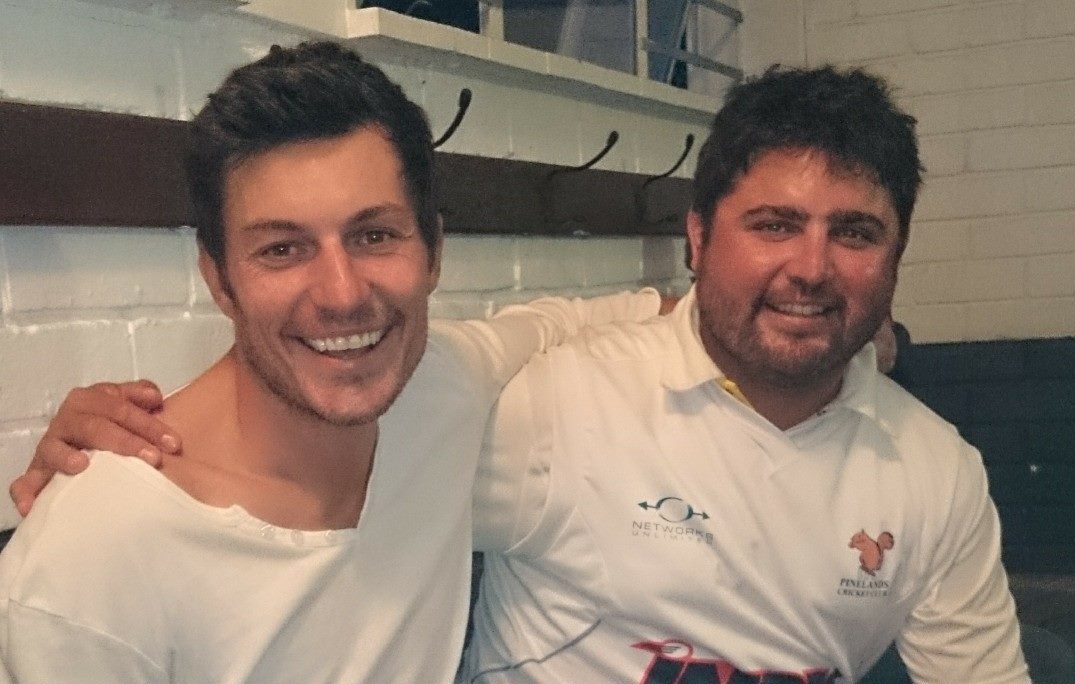
The Human Connection
By Craig Stirton
There’s more to cricket than match-winning knocks and game-changing spells. Friendships forged and memories made in the heat of battle far outweigh any number of hundreds or five-fors. Just ask Pinelands Cricket Club President Steve Westraad.
Westraad’s club cricket career has spanned the better part of 25 years and has taken him from rural Eastern Cape to the Minor County circuit in England, and finally to Pinelands Cricket Club where he has worn the Squirrels badge with pride and distinction for close on two decades.
Westraad is the quintessential club man. He’s worn many hats while at Pinelands CC: From wearing the skipper’s armband for the 1st XI and then subsequently the Vets XI to serving as Club Chairman and now President, it’s clear just how much the club means to the affable 42-year-old.
Through title-winning euphoria and relegation-agony, it is the company of teammates like Mark Temple which have made for a memorable journey. Westraad and Temple are two of the stalwarts of the club and - after the team suffered relegation in 2012/13- they were both fiercely determined to leave the club in a good spot before eventually calling it a day.
As it happened, the pair not only played a part in Pinelands’ return to the 1A league but also in triumphant T20 campaigns and Vets' success as well.
“We called it a day together in Covid having battled for six or seven years to get Pinelands back to 1A. We could’ve easily called it a day when we went down but we knew we had a job to do," Westraad tells Cricket Fanatics Magazine.
“We’ve got such a bond now and we fought together for something that became bigger than ourselves.”
Westraad believes the club cricket environment and the challenges players face in match situations facilitate personal growth.
“You start out as an individual, it’s about you. But when you appreciate the bigger picture, the common goals, and working together that’s when I think you grow as a person,” he reflects.
Yet while the bond between club teammates is forged in the middle, it goes far beyond the square and the boundary.
“Our strongest bonds and friendships are the ones you develop in the trenches. If somebody’s got your back and things aren’t going well or somebody is chirping you in the middle, you’ve got guys who are in that battle with you.
“It’s going to be the same later in life – those are the guys you’re going to go back to, the guys you trust.
“It’s not only about playing at the highest level or earning money. There’s always a bigger team to play for.”
For a youngster making their way in the game, there’s no shortage of cricketing acumen they can tap into at Pinelands Cricket Club.
Proteas legend Herschelle Gibbs has played for the club in the past while Darren Stevens - a 46-year-old who is still playing for Kent and who in 2021 became the oldest Wisden Cricketer Of The Year - has also featured for Pinelands CC.
Such players are valuable resources on a number of levels within the club cricket structure as younger players navigate the early stages of their careers.
Tom Curran for example represented Pinelands before going on to play for England in all three formats.
”A guy like Darren trains harder than anyone else and sets a great example for youngsters to follow. Through their experience and knowledge of the game, Darren, Herschelle Gibbs and the like are fantastic resources for younger players such as ‘TC’ as they find their feet.”
Winning a game of cricket is one thing. Winning at life through cricket is something entirely different and something that club cricket provides by way of its diverse membership.
“You just have access to opportunities by being in change-rooms from a young age, developing as a human. Listening to stories of success or failure and just feeling comfortable around people whether they are MDs, CEOs, Sponsors, whatever the case may be.
“Cricket is a way of assisting someone to become a more rounded person because it’s going to help them with life skills, they might get a job through the connections they make and ultimately be better off for having played the game.”
Photo Caption: Steve Westraad (right) and Mark Temple (left)
Advertisement
Ezra Poole's Online Wicketkeeping Academy
Learn how to Master The Craft of Wicketkeeping Without Having to Hire a Full-Time Personal Coach.
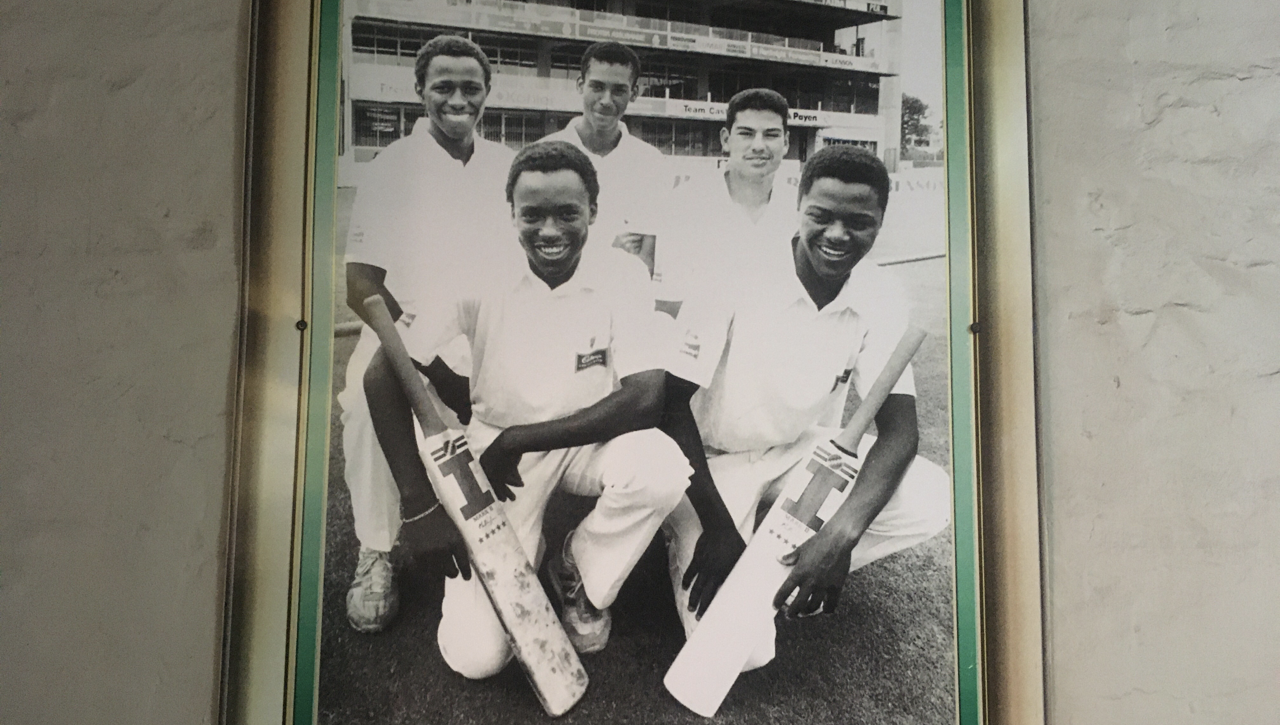
Kenneth Mahuwa: A United Cricket Club and EP Legend
By Ongama Gcwabe
If you’ve ever been to St. George’s Park Cricket Stadium, you would’ve noticed pictures of Eastern Province teams and players behind the stadium stands.
As a kid growing up, you would always wonder: who are all these cricketers?
One picture that has always stood out to me was of five young black cricketers kneeling, posing for a photo in front of the Park Drive End or the Graeme Pollock Pavilion.
The five young men were all part of the 1991 EP Nuffield Team, which is known today as the EP U19 team that features in the Khaya Majola Week.

Back Row (left to right): Kenneth Mahuwa, Roger Qeqe and Russell Domingo.
Front Row: Derrick Sontundu and Lulama Masikazana.
This story is about Kenneth Mahuwa, a left-handed opening batter and usually first-change seamer for United Cricket Club and EP Cricket back in the 90s.
Like many black cricketers of the past, and to an extent, like many black cricketers of the present generation, Kenny’s career cannot be narrated without the ‘what ifs’ and the ‘what could’ve beens’.
His story is another example of what transpires decades down the line should a cricketer not be given opportunities.
Kenny’s father was a cricketer himself but made a name for himself as a skilled groundsman. It was inevitable that Kenny would follow in his father’s footsteps and fall in love with the game.
“I was 14-years old when I started,” Kenneth Mahuwa told Cricket Fanatics Magazine in an exclusive interview.
“I played one season and then I was promoted to play for the A-side. The A-side had the likes of Khaya Majola, Allistair Coetzee and Danny Jordan to name a few. This was before unification and we used the Wolfsen Stadium as our home ground as the United Cricket Club.
“In 1991, when the Den Qeqe stadium was built, it was our main stadium and Adrian Birrell played in our club at the time. They were the first whites to play in our club as far as I can remember.”
Mahuwa was a talented opening batter and was often selected to represent Eastern Province in age-group cricket. In 1991, he was part of the province’s U19 team that took part in the Nuffield tournament.
“In 91′ I was part of the Nuffield side for the second time in a row. At the end of 91′, I was picked in the EP B side and I played about three games that season. It was in 92′ when I started being a regular in that side,” Mahuwa recalled.
“In March, I got selected in the SA U19 side and we toured the West Indies. We had Herschelle Gibbs, Dale Benkenstein, Quentin Still and Lulama Masikazana. I still remember how fluent my game was at the time.
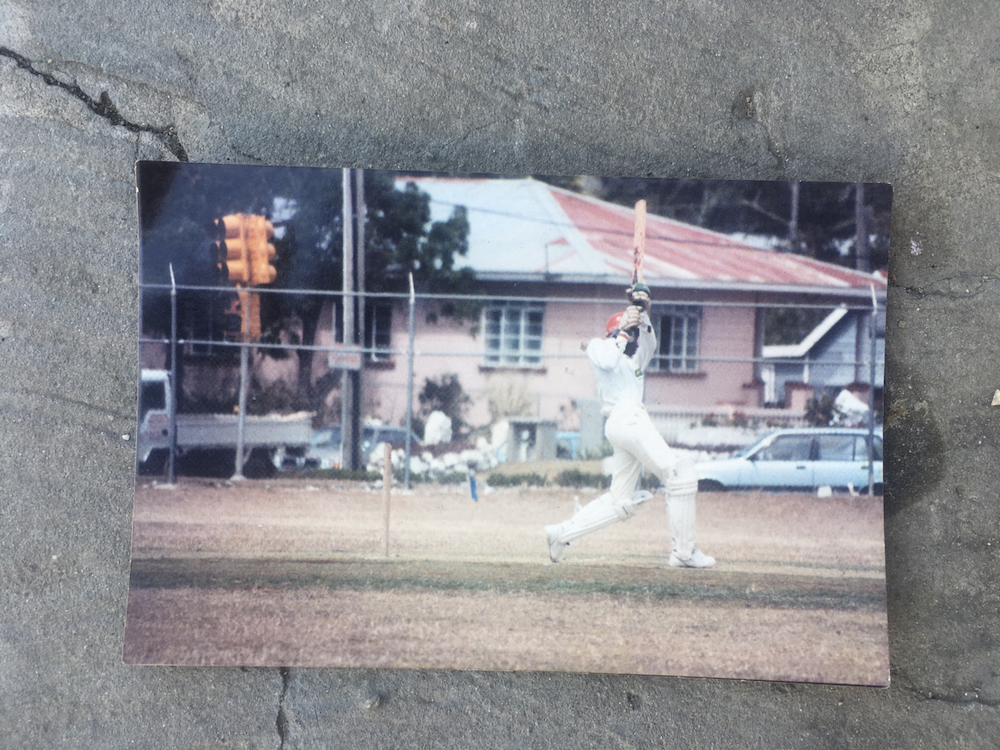
“I was at my peak during that tour. As an all-rounder, I was performing with both bat and ball. And now that I think of it, it was a tough West Indies side that we played against. They had Shivnarine Chanderpaul in that side. It was not an easy matchup but we were up for it and we performed decently as a team on that tour.”
Normally, unions always look to contract a few rookies in their annual contracting. Those rookie contracts were often presented to the top-performing U19 boys. To this day, this is still the case.
“The challenges started when we came back from that tour (SA U19 tour). All the other guys got contracts with their provincial A sides except for me. Perhaps not all of them, but certainly most of the top performers that toured the West Indies. It was painful! I couldn’t understand because I wasn’t even given a reason,” Mahuwa explained.
“You have to remember that at the time we couldn’t talk or we were not given a platform to voice out how we felt. I had my place in that EP A-side but they used the experience to sideline me from that team.
“I couldn’t understand because how was I going to gain experience with them not giving me a chance to showcase my skills at that level? They kept advising me to be patient and that my time would come.”
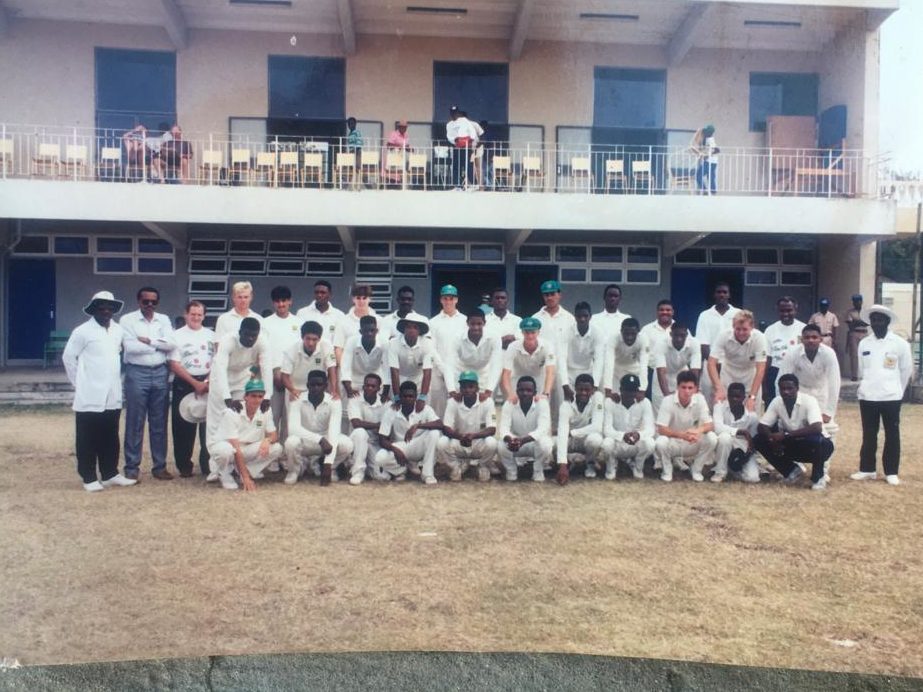
Although the advice never materialized, Mahuwa was still recognized by Nicky Oppenheimer as a talent that could test touring international teams leading up to a Test or ODI series. When India toured South Africa in the summer of 92, Mahuwa and Herschelle Gibbs were two youngsters that featured in the Oppenheimer XI while Clive Rice captained the team.
“When India came here in 92/93. I was called up by Nicky Oppenheimer. We were in the Oppenheimer XI that had Jimmy Cook and them. So I played in that team and was batted at 6 as an all-rounder and I didn’t really mind that because it was still in the top six,” Mahuwa stated.
Throughout this time Mahuwa had no contract which meant no income. He was still living at home in a township called Seyisi in Gqeberha.
“You can imagine the differences in living conditions because we were booked in at Sandton Sun (while in Oppenheimer XI) and when I came back I’m still not contracted which means I’m here in the township,” he said.
“There was already an opening batter in the EP A-side and Kepler Wessels was his partner at the top of the order. That was my main competition for a spot in the A-side.
“I still remember the EP A coach coming to me and asking me to perform to prove my worth for the A-side. This was a few days before the EP B side took on the Griquas in a 3-Day game.
“I scored a hundred not-out in that game and took five wickets. When that game was finished, I didn’t fly to Port Elizabeth (Gqeberha) instead I was flown to Pietermaritzburg because I was selected to play in the President XI that was going to play a Day-Night game against the same India side.
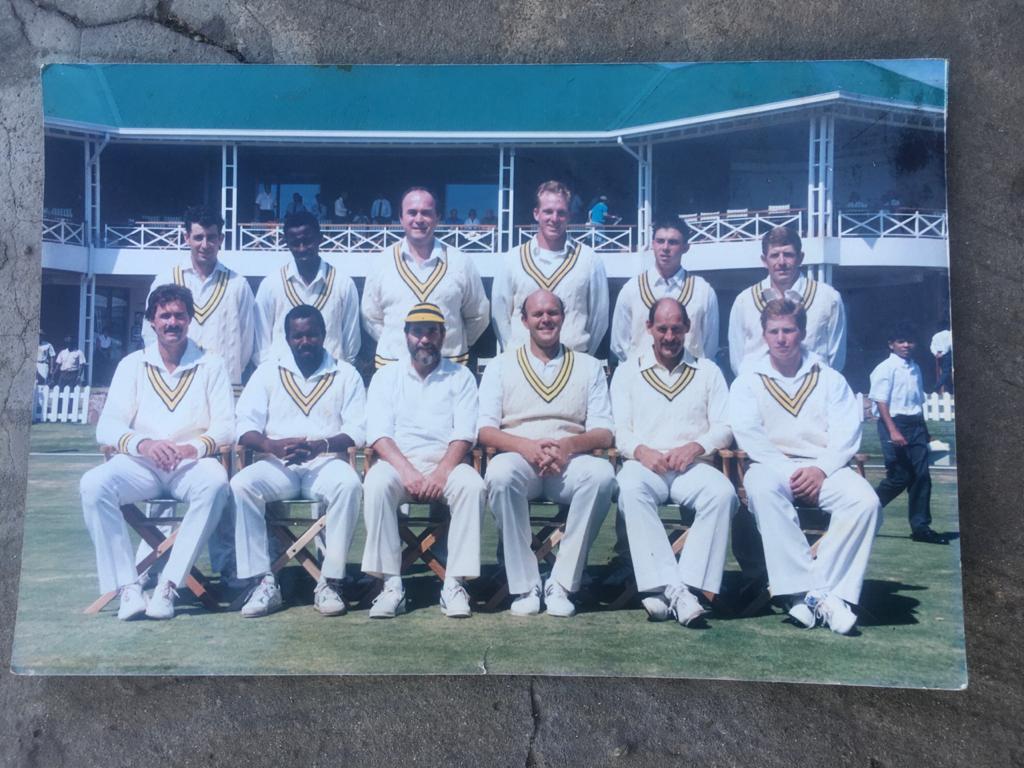
“I batted at 10 in that game. Which is something that really hurt me because I was scoring runs opening the batting. It was tough. But I performed well with the ball in that match.
“When I came back to PE, I was told that Kepler’s opening partner was going to be given another chance even though he didn’t make runs. But I kept quiet. Another match came when we played Western Province B, I scored 60-something in the first innings and 70-not-out in the second innings. When I came back home, I was still not in the EP A-side.
“In 94′, West Indies toured South Africa and I was again invited [to play] in the Nicky Oppenheimer XI but I didn’t play because I was sick the night before so I had 12th-man duties. I came back home, still no contract and no communication,” he added.
The township environment that Kenny was still living in was and still is not an ideal environment for an athlete for a host of different reasons. Among many challenges of being in the township is the lack of proper training facilities. Also, as a young man, the alcohol and drug-ridden streets of Seyisi can be a trap any youngster can find themselves in.

“The EP A coach came to my house and suggested that I should move out of the township and go live in town. When we got to town, I found out that they organized an office at St. George’s Park for me. So my room was an office at St. George’s Park,” said Mahuwa.
“What really frustrated me at the time was the fact that when the A guys would come in to practice, they’d ask me to bowl to them so I was a net bowler. And when I batted, I batted with bowlers and batters bowled at me which wasn’t good enough practice for me as an opening batter.
“I got tired and left the office after about three months living there. I didn’t communicate with the EP people, I just left and did my own things.
“I came back and played for United Cricket Club. In 95′, an SA XI side was selected to tour Malawi for an Africa competition. That side had your Roger Telemachus, Andrew Hall and them. When these guys came back to SA they all got contracts. All that happened to me were promises that never materialized.
“In 96′ I realized I was wasting my time. I told myself that enough is enough. That’s when the drinking started. I don’t blame anyone but I was frustrated,” he concluded.
Writer’s Message:
The importance of telling stories of our legends is that they educate and enlighten us. The purpose is for us to understand the consequences of our ways and do better.
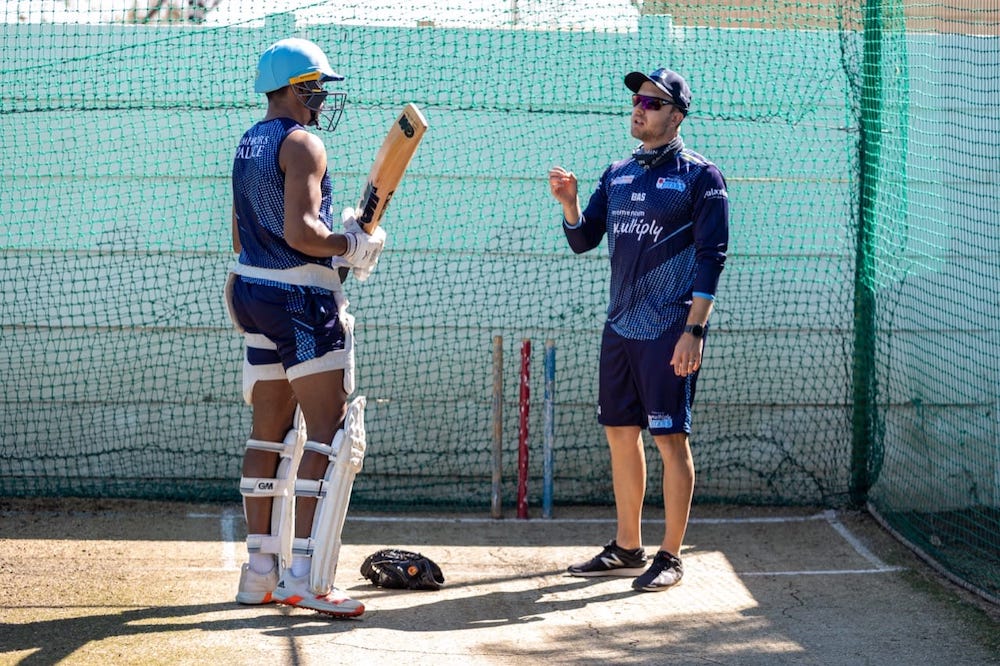
Division 2 teams challenged to maintain a healthy pipeline
By Aditya Mehta
For the better part of the last three years, the South African men’s cricket team was considered to be in transition because a number of experienced players retired, and the management was striving to build a new team for the next decade.
In the 2021-2022 season, it felt like South Africa had turned the corner, given that they comprehensively defeated India in the home Test and ODI series, and drew a Test series against New Zealand away from home.
Although an ODI series defeat against Bangladesh would have hurt the Proteas after their results against India and New Zealand, there are plenty of positives that fans can take from the progress that the team has made this past season.
Richard Das Neves, the High-Performance Coach at the Titans, was of the view that South African Test and limited-overs teams generally performed well through the summer.
Das Neves said: “Overall, the team, despite many challenges off the field, has performed really well on the field.”
With respect to the Test team, Das Neves reflected: “The Test side has done phenomenally well with some challenges of not always being able to what we would think is our best team out in the field.
"I guess that’s a good sign for our domestic level that guys were able to step up.”
Das Neves was equally impressed with the T20 team, particularly during the World Cup in the UAE.
“Our T20 side, if we take the WC into consideration, they actually did really well. Really unfortunate that we didn’t qualify and the one side we slipped up against, who, in my opinion, we were a better team, actually went on to win the competition.”
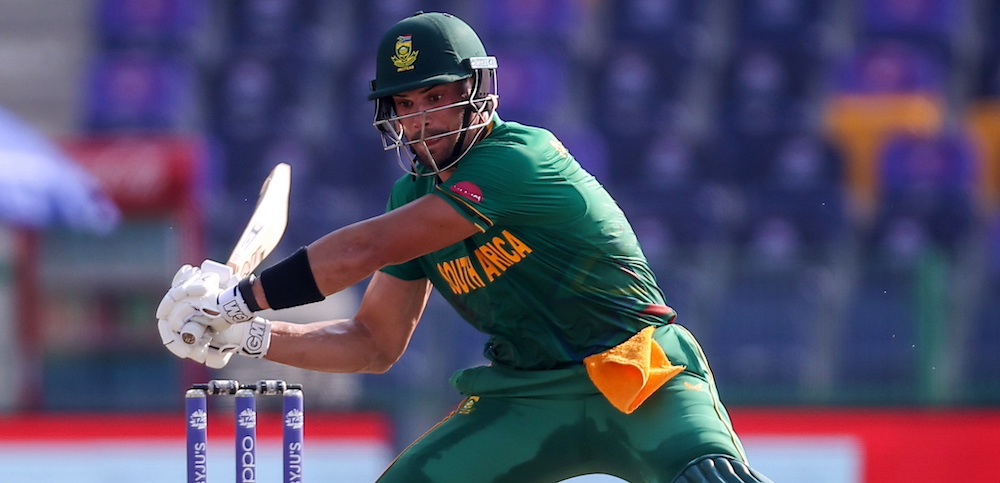
However, Das Neves was concerned about the Proteas’ One-Day performances, although that could be attributed, in part, to the timing of the domestic 50-over competition.
“One area of concern has been the One-Day cricket. With a World Cup coming up soon in that format, that needs to be prioritized a little bit in the coming months.
"What didn’t work in our favour from the domestic point of view is that our 50-over competition was right at the back-end of the season, so there wasn’t a lot of continuity through that.
"Bearing in mind that there have been challenges with COVID and fixturing, and during November-December, that wave that we had set things back a little bit.
"Hopefully, next season, we can rectify the fixtures and get the flow between domestic going into international cricket a little bit better.”
While the South African team performed consistently through the season, Das Neves identified the lack of hundreds as a concern.
“One area that we could look at is that we haven’t scored many hundreds. A lot of our batters have contributed and are averaging between 35 and 50 in all formats, but we haven’t had those 150s-180s that put you in a commanding position.
"Dean had a good Test season. He had 6-7 50s but he didn’t get to a 100. He’s one of the better guys in terms of conversion. Temba gets the 50s, but he doesn’t get the 100s. He gets 50 very regularly but that’s probably one area.”
Elaborating on Temba Bavuma’s lack of centuries, despite scoring half-centuries regularly, Das Neves explained.
“With Temba, he’s scored a lot of hundreds in his life. Not necessarily in international cricket, but in his life. So it’s not a matter of he doesn’t know how to do it, I guess it’s the time frame now since that last one that the media and everyone keeps putting this sort of an extra little bit of pressure on the shoulders there and that just makes him tentative, freeze up, or tentative as he gets closer.
"If you analyze what he’s had so far, 12-15 50s that he’s got that he hasn’t converted, a lot of those have been not outs. We can always look at those stats but when we go through it periodically, he hasn’t made a hell of a lot of mistakes.”
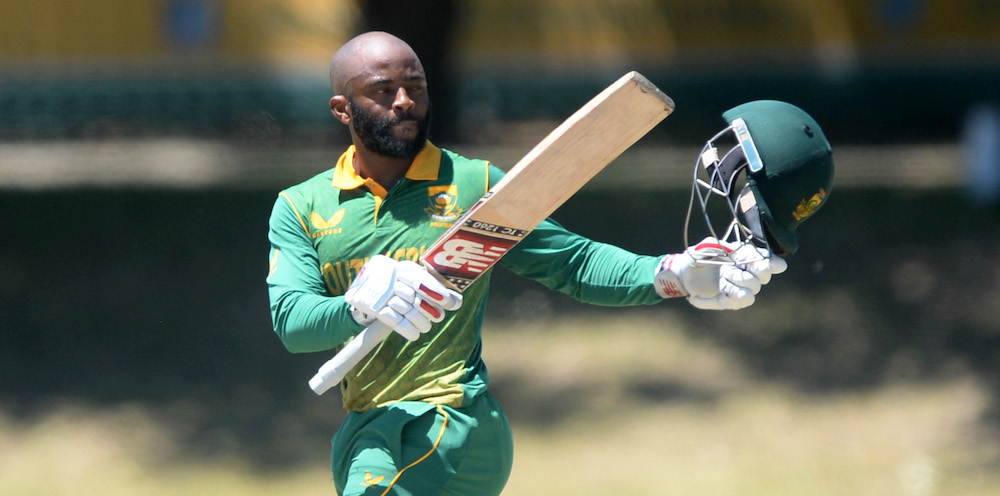
Das Neves also suggested that South African domestic cricket could improve its implementation of role definition.
“If we look at our SA A side now playing in Zimbabwe, we can still be better with our role definition. Looking at the lineups there. Certain batters are opening the batting, then they’re at 5 two days later. That’s very difficult for a batter who is trying to stake a claim for the national side if he’s batting in different positions. Our role definition down the pipeline could be a little bit better.”
Over the last couple of seasons, the South African Test team, in particular, have been termed “slow starters” because they typically start series poorly, but find a way to bounce back. Das Neves analyzed the trend and explained to Cricket Fanatics Magazine.
“I think the nature of the fixtures sometimes determines that. Sometimes you’re going from different formats or as a unit, you haven’t been together, and we do have a few changes from Test cricket to white-ball cricket.
"So, naturally, the more you play of a format, the better you’re going to get at it. Guys might be going for IPL and they need to switch on to Test cricket. Different conditions, different bowlers, different colour ball.
"Everything is different. Hopefully, quarantines and things like that are a thing of the past. Instead of spending 10 days in quarantine, you can play 2 four-day games to be ready for the Test matches.”
The series between South Africa and Bangladesh generated significant debate because a number of first-choice players had been picked up by IPL franchises in the auction, which meant that South Africa would be fielding a fairly inexperienced Test team.
South Africa were still able to pull off a comprehensive series victory. Das Neves attributed the team’s success to the amount of game time that South Africa A players were able to get.
“It’s difficult to be in a position where you lose 6-7 of your better players who are all of a sudden going to go to the IPL. That’s the first time it has ever happened in South African cricket and hopefully the last, let’s be fair.
"In terms of domestic cricket, trying to bridge that gap, there has been a lot of time and effort put into SA A series. We even had a mid-season four-day SA A series against India this year for the first time. That type of planning can only bode well for us.
"Sarel Erwee played in that series and played well. He stepped up into Test cricket. Glenton Stuurman, Lizaad Williams. Those types of players have all got that type of backing there from an SA A perspective.
"I’m hoping there is an SA A tour to England before this next Test series because that can only bode well for our depth and to prime guys for that next level.”
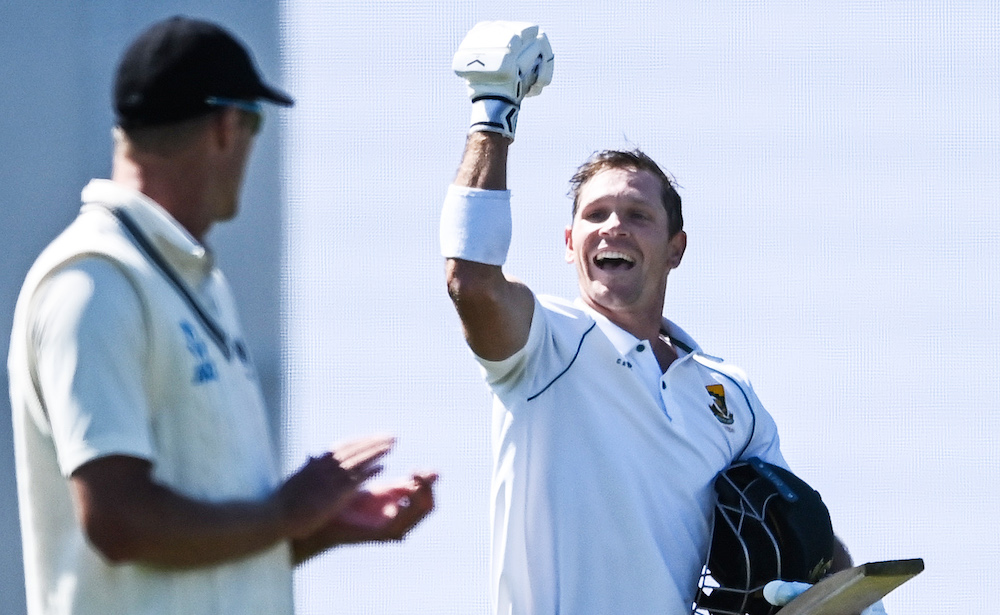
For the Test team to have ready replacements at any given time, Das Neves believes it is imperative the domestic circuit knows its fixtures ahead of time.
“It’s important we try to be proactive and think ahead. I think the scheduling is so vitally important. I’ve been harping on it for a while, even when I was at the level below at the Easterns. The planning and time frame you can get these fixtures out.
"Surely, we can be better at that and know what is happening ahead of time so that coaches can plan better, players can plan better.
"If you know what is happening over the next 12 months, you can periodize your cricketing life so that you’re primed for certain things.”
The recent challenges in scheduling mean that there would need to be a high degree of coordination between the Mark Boucher and coaches of the domestic teams.
Das Neves said: “I would think there is good communication between Boucher and at least the top 8 Head Coaches, in terms of player production, and SA A perspective.
"My experience in cricket is that communication can and should always be better. If people think they’re communicating well, then it's probably because they’re not.”
The restructuring of the domestic circuit has been on Cricket South Africa’s agenda for a long period of time. This past season was the first time that the first-class competition was split into two divisions.
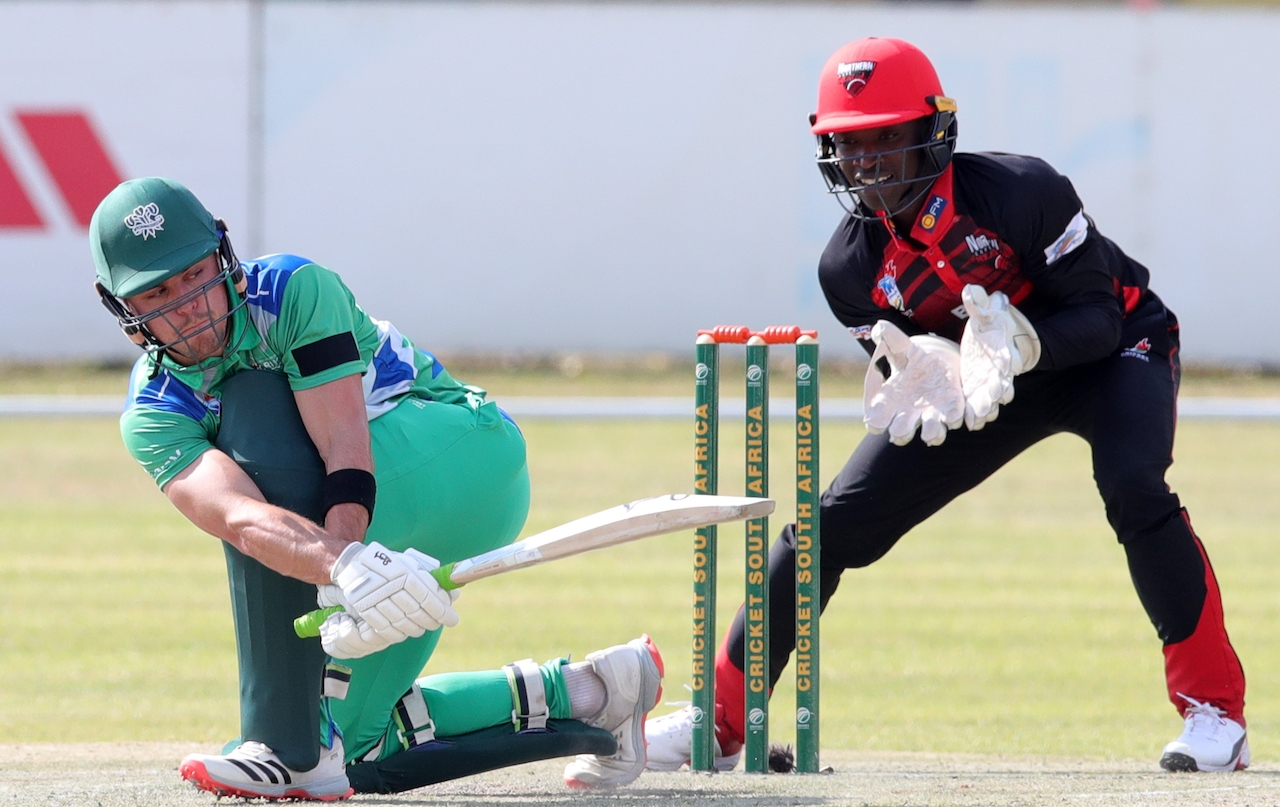
Upon asking Das Neves about the gap in the quality of cricket between the two divisions, Das Neves said:
“It’s probably a bit too early to say. We look at the comp, quite a lot of Division 2 teams competed well. Northern Cape, South Western District have qualified for the Top 8 or the quarter-finals.
"I think even if you look at a team like Mpumalanga, who haven’t got first-class status, they’ve competed well this last season. There’s been no easy games, no knock-overs that I’ve seen. I don’t think there’s as big a gap, I think are a few players who could easily make the step up to Division 1.”
However, Das Neves pointed out that Division 2 teams would be challenged to maintain a healthy pipeline of players.
“Where issues may arise in Division 2 is the depth of their full squad because they’ve only got 11 contracted players.
"When you start looking outside of that, how good is their pipeline?
"How good are the young players coming through their system to step into professional cricket?
"That’s where you might be able to see a slight difference in Division 1 to Division 2. The unions that have better pipelines – good university systems, good club system to push players through would be better suited.”
One of the USPs of South Africa’s domestic pipeline was the abundance of bowlers who could clock 150 kmph consistently.
Over the last few years, there appears to have been a decline in the number of bowlers who can deliver express pace.
Das Neves explained: “It’s a difficult one because a lot of that is genetic, in terms of how your body works, and guys who can bowl fast, in terms of their wrist position, and their rhythm and their action.
"Yes, you can coach 5-10% of that, you can assist and help. I always look at it as a triangle. At the top of the triangle, you look at your bowling action, which is your skill, and what you bring to the party from that perspective.
"Then you’ve got your workloads, what the science says in terms of that. Then you’ve got your fitness, your conditioning. How much you’re putting in there, in terms of the right exercises, the right strength work, and flexibility. When that triangle all meets and is well-balanced.”
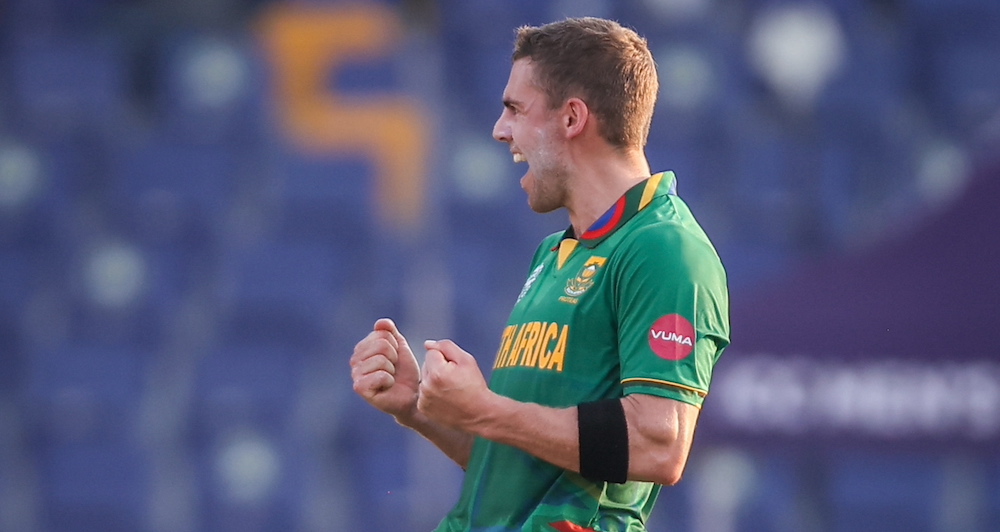
Das Neves cites Anrich Nortje as an example because he wasn’t always the 150 kmph bowler we now know him to be.
“Nortje, when he was a little bit younger, he was at best a 130-135 seamer in his first 3-4 years of playing first-class cricket for Eastern Province.
"Then he managed to get that balance right between conditioning, he made a couple of changes in his bowling action, and one particular change was that he managed to get his front leg more braced.
"He got the timing of his release point right. All of a sudden he went from bowling 135 to bowling 150.”
Although there is plenty of satisfaction to be derived from raw pace, given how rare it is today, Das Neves believes it is more important for bowlers to develop accuracy.
“In the last 10 years of South African cricket, we’ve been a little fixated on these 150 bowlers. So many of our guys have lost control. If we put a cone down and ask guys to hit a cone, they’re missing it by a long way.
"If you’re bowling 150, and spraying it all over the place, it doesn’t matter. You’ve got to have a sense of control. That’s our real challenge – even in domestic cricket, never mind the 150 bowler, we need more bowlers who can hit an area consistently. Bowling the ball you want to bowl at that time. If it’s a yorker, it’s landing the yorker.”
Despite the challenges that South African cricket has confronted on and off the field, this summer has brought about a renewed sense of optimism.
If South Africa continues to deliver the performances that we have witnessed over the last few months and addresses some of the concerns that Richard Das Neves pointed out, South African cricket will be in a strong place for years to come.
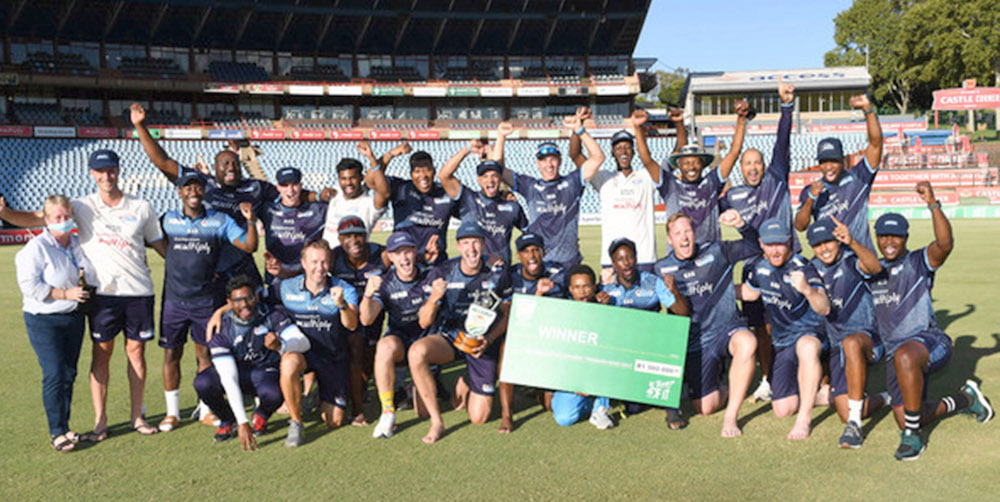
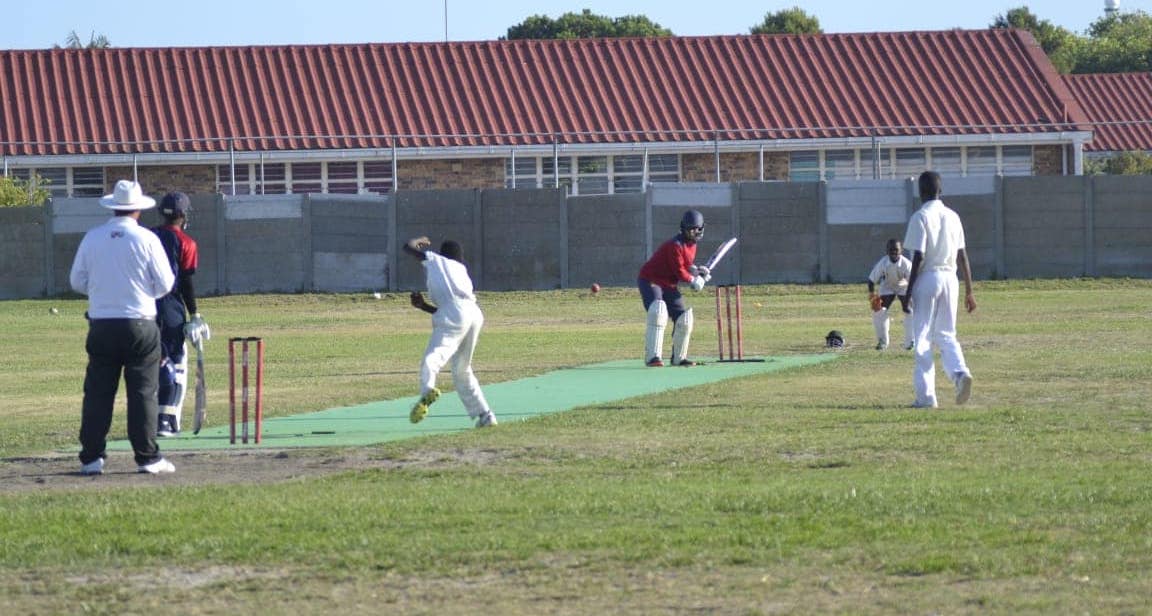
The Humanity in Cricket: How Fish Rite Hanover Park Cricket Club Is Giving Youngsters A Way Out
By Chris Chiwanza
“We want to help our players to become better players and also develop into better human beings.” These are the words of Igshaan Hugo, the head coach of Fish Rite Hanover Park Cricket Club in Cape Town.
Every now and then we all come across stories that are infinitely bigger than us, bigger than our expectations.
In these last 12 months, so far, that story for me is the story of Fish Rite Hanover Park Cricket Club and their youth program and the efforts of the club in general.
The club’s coaches attribute all the positive developments to their club Chairperson Ashraf Allie. But Ashraf insists that it is the coaches who do all the heavy lifting, and that’s why he refused to be the one to tell the story of their programs.
This is their story:
“We want to help our players to become better players and also develop into better human beings.” These are the words of Igshaan Hugo, the head coach of Fish Rite Hanover Park Cricket Club in Cape Town.
But, both are easier said than done, and here is why: the club lacks proper facilities.
Even though it is very difficult to help a youngster to hone their skills when the ground is not up to the best standard. Forget the lush green cricket fields with discernible pitches. That is not what one will find at their grounds.
Their grounds hardly have sprinklings of grass cover, and the best way to describe them is sandy. But, that doesn’t deter the ambitions of the youth coaches at Hanover Park who make up for what they lack in facilities with determination and passion.
Christopher Lodewyk and Wesley Seconds, the two junior coaches at the club, really believe that the club will produce players who will represent South Africa in future. Both the Momentum and Betway Proteas teams. Anyone on the outside looking in might consider this dream as delusions of grandeur. But, delusions of grandeur they are not.
Having practically spent most of their lives with the club, first as players and now as coaches, Lodewyk & Seconds have seen enough to believe that almost anything is possible. After all, the duo played alongside the current Assistant Coach of Cape Cobras, Faiek Davids at Hanover Park.
Yes, Faiek Davids the big-hitting lower to the middle-order batsman, who played in the Howa Bowl and later played with Western Province and Boland during the 1990s, was once a member of the club.
Having such an acclaimed player as an alumni gives the club something tangible to show the current generation of age-group cricketers. It gives them something to aspire to. And even though Lodewyk and Seconds never reached the heights reached by Davids, their effort now is to help the club’s youth to go beyond the levels they reached as players.
They are determined to make the best of the situation.
POVERTY AND GANGSTERISM
If the lack of facilities had been the only hurdle in the way of Fish Rite Hanover Park Cricket Club’s way, things would be much easier. Sadly it is not. The club is nestled in one of Cape Town’s most notorious neighbourhoods, Hanover Park.
With high levels of poverty, it is not uncommon for two families to live under one roof or for one family of up to 10 or more members to depend on a single breadwinner. What that means is that most youngsters in the area are either under-nourished or do not get enough to eat.
“One of our biggest problems is nourishment,” Igshaan shared. “It is very difficult for a young person to concentrate on their batting or bowling on an empty stomach.”
In most cases, especially in areas like Hanover Park, the easy way out for many idle youths is crime and gangsterism. It gives them a way out, a source of income and somewhere to belong that is not home. It is not easy to help mould a teen into a better human being in these conditions. Because already their society is moulding those youths in a different way.
The community dictates how they should walk, how they should talk, how they should behave. In most cases, they are not expected to behave like minors, but rather like adults. Instead of doing regular things that youngsters do. They need to develop abilities to look after themselves when bullets are flying around them. They cannot be children, they are asked to grow up much too quickly.
At the end of the day, it is far much easier for a youngster to get a bit of money from crime and gangsterism than it is by playing club cricket.
But, Fish Rite Hanover Park Cricket Club chairperson Ashraf Allie and his team are slowly gaining ground by providing food hampers and meals to their members through the various partnerships the club has established over the last six years.
In doing so, they are showing the youth that there is a better way.
The truth is, once an individual is no longer worried about going hungry, then they can dare to dream.
OPENING UP THE WORLD
Despite all of these problems, the club has slowly made milestones. In 2019 the club sent a team of U14 club members on a tour to the UK where they had the opportunity to visit County Cricket sides, including the club’s patron Moeen Ali’s Worcestershire County and even made a stopover at Lord’s.
The trip was such an eye-opener to the youngsters, showed them that there is a bigger and better world full of possibilities out there. It showed them that no matter how big their dreams, dreams born out of reading and watching international cricketers, it is not a world entirely beyond their reach.
After their tour, the club received a visiting group of cricketers from Birmingham in early 2020, just before the lockdown and travelling restrictions were enforced to try to contain the Covid-19 pandemic. The reciprocal visit by the English contingent helped to strengthen ties and a sense of identity as cricketers with the members of Hanover Park.
The reality, though, is that trips abroad only come once in a while, so Ashraf, Igshaan and the other coaches are constantly organizing outings.
Most of them might be within Cape Town, but what they do is open the eyes of their youths to the fact that there is a world out there. A world that is within reach.
A world where one doesn’t have to act tough to survive. A world where the sound of gunshots is not as regular as a car horn. A world where not everything is transactional, where the young girls are concerned.
“When I first joined, the young girls were uncomfortable accepting little things from me. Drinks, sweets, anything. Because the expectation is that when someone gives you something they want something in return,” Igshaan shared.
Chatting with Ashraf and his team I realized that what Fish Rite Hanover Park Cricket Club was doing is bigger than just sport. It is more than just a place where youths play a game they love, go on hiking trips and different excursions. It is an effort to offer youths from Hanover Park a way out.
“It’s not easy, but besides building cricketers, we are trying to build well-rounded individuals. People who can work with others in teams. People with a sense of responsibility.”
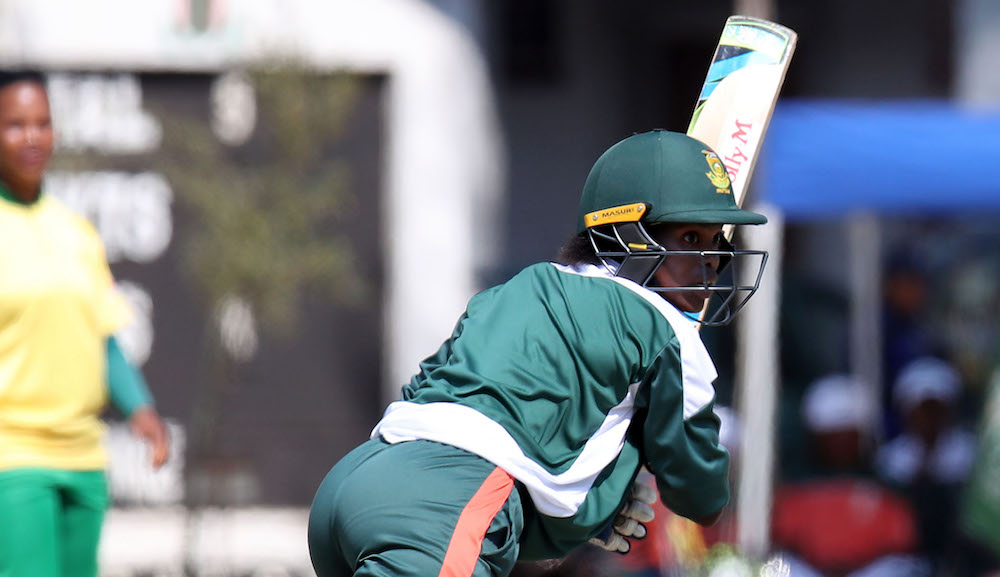
Growing Women's Club Cricket will aid the growth of the sport
By Lubabalo Skhosana
For a country that seeks to transform sport, South Africa is falling behind when it comes to women’s sport.
Just recently, Portia Modise spoke about how she earned a mere R4,000 whilst playing for Banyana Banyana. For a legend and stalwart like Portia to be living in a shack and earning R4,000 whilst scoring so many goals for the country is overly concerning.
This is an issue that filters down to cricket where senior provincial women are not even considered professional athletes and do not even get paid.
A lot still needs to be done to fix this but for now, let us look at club cricket.
Very often when we speak about club cricket, everyone thinks of men’s premier league cricket. We tend to forget that women have club cricket too and that it also plays a massive role in the growth of the game and the development of the game.
A solid club cricket system will always be of benefit to the entire system, and therefore we need to have a solid women’s club cricket system. This would mean that women’s premier league cricket gets the same recognition as men's cricket.
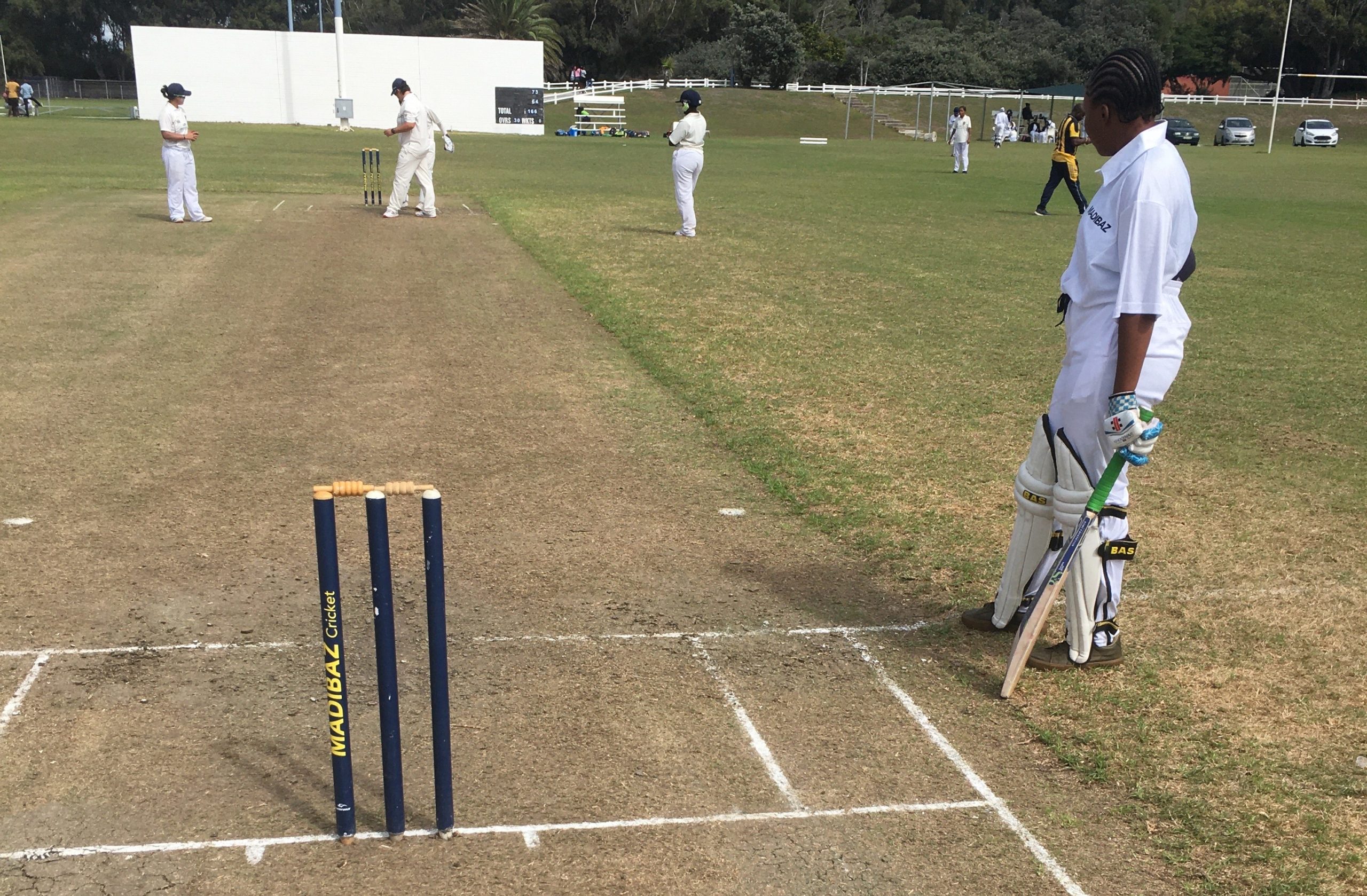
The establishment of a women’s club champs. This would also require a bit more put towards such projects and also try to have multiple women’s club cricket leagues. This would see more women taking up coaching, umpiring, and scoring which would be great for our sport.
Several Unions are falling behind when it comes to club unions and there are a few that seem to be doing fairly well. Women’s club cricket is something that some Unions do not care about.
One can even tell that some Unions only have it for CSA’s Scorecards, some clubs are guilty of that too. These Unions and clubs seem to not understand the bigger picture and the importance of a solid women’s club cricket structure.
This perhaps calls for CSA to do something about Unions that do not take women’s club cricket seriously.
In some unions, you will find that there is a premier league for women, but it is not effectively managed and organised. Teams play just 2 matches, there are no umpires in matches and many other challenges that one normally sees in lower league matches.
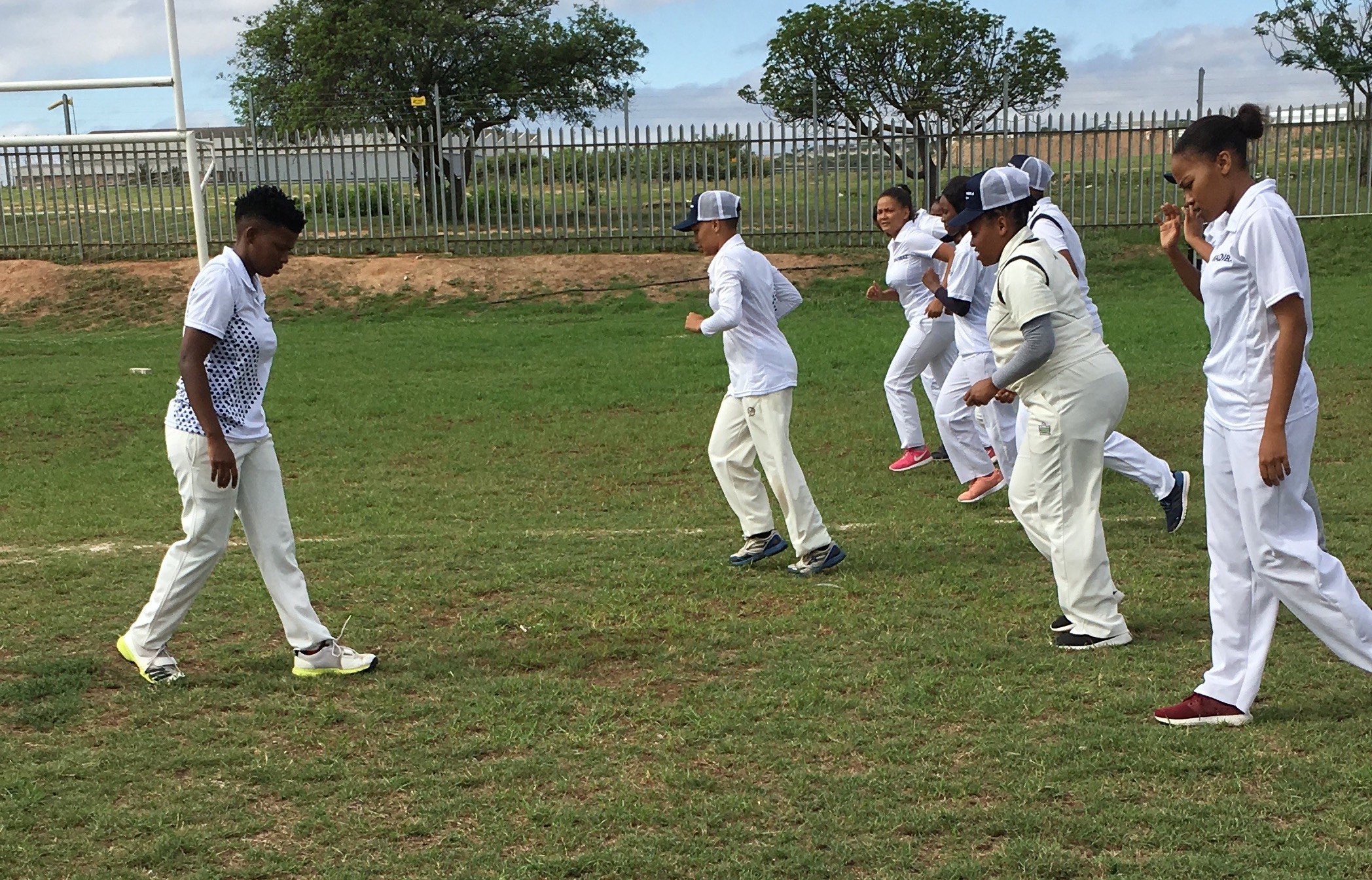
It is a question that a lot of coaches ask: Does CSA fund women’s club cricket? The fact that unions do not take women’s club cricket seriously could also be the reason some clubs have not even bothered to start a women’s team.
An example of how poorly managed women’s club cricket is, last year in one Union, a ladies' mayoral cup final never took place because it had to be cancelled after the organiser of the tournament made a blunder with the points.
We can fault clubs for not investing in female cricketers, but it will always be hard for them if the investment is lacking from CSA and its Unions.
Growing women’s club cricket will aid the growth of the sport in the country and will aid the Women’s national team one way or another but most importantly, it will aid the women’s provincial structure.
Women’s cricket mustn’t be used as something to get ticks on CSA scorecards.
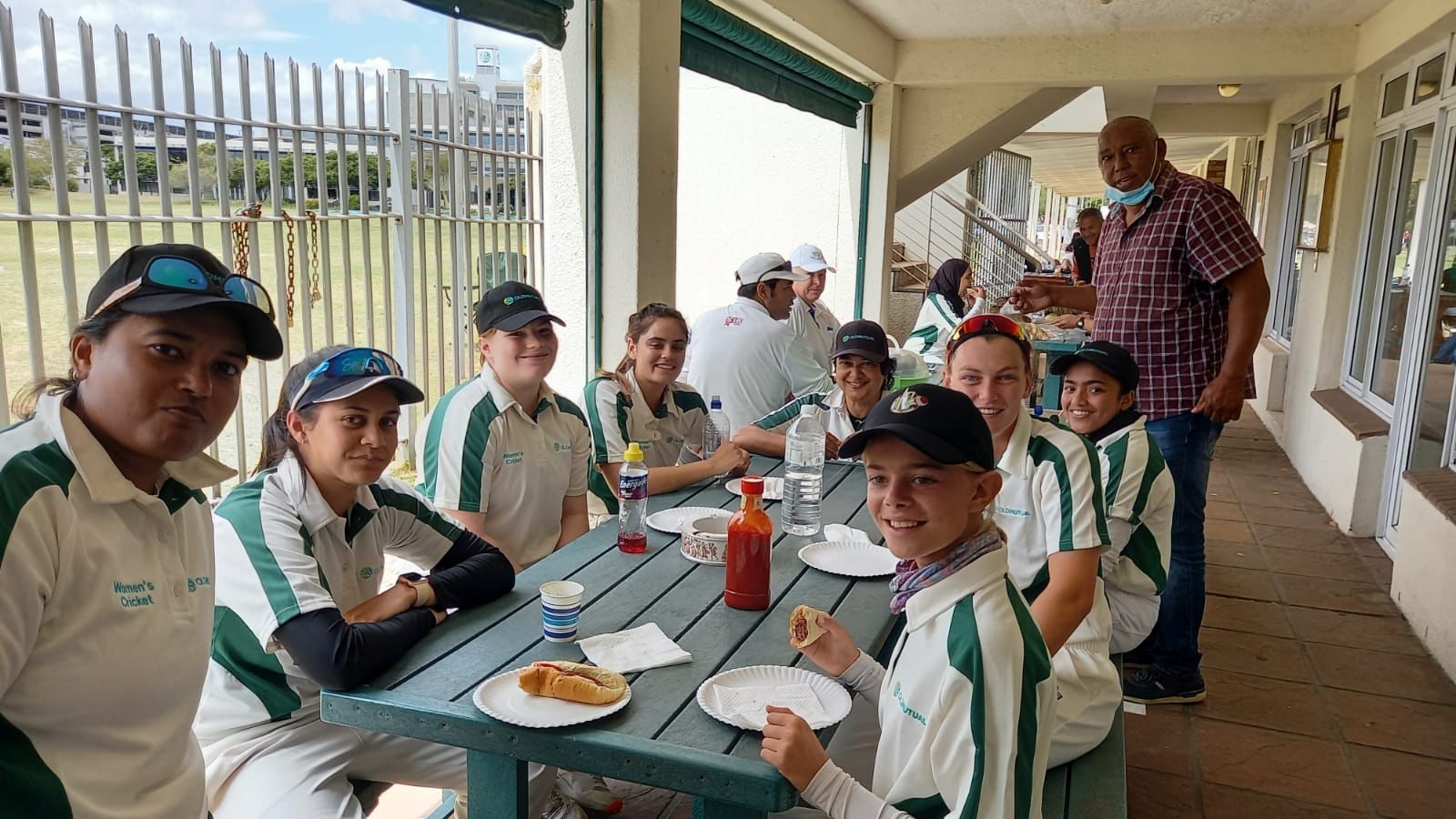
Q&A: Nadima Khan – Old Mutual Cricket Club player-coach
When and how did you start playing cricket, and when did you transition into coaching?
I officially started playing cricket in 2001 and have been playing for 21 years. My cricketing journey started by playing backyard cricket with my 3 brothers, cousins and neighbours in Durban. In 2001, I decided to play club cricket and joined the Simplex Crimson Cricket Club that was based in Reservoir Hills in Durban, and have been playing ever since.
No journey is an easy one, and mine was no different when it came to cricket. In the small town I lived in, Umzinto, there were only males playing cricket. There were 5 ladies (including myself) that were interested in playing. However, there were no clubs close by that catered for women playing cricket.
The nearest facility we were afforded to play at every Sunday was within a 45-minute to an hour driving distance from our houses. As time went on, other girls started joining us until we had a full complement of girls to form a team and enter a local league.
Most of these girls didn’t know how to handle a cricket bat or ball. But with hard work and determination and investing time in transferring our cricketing skills, we developed into a team of players that could healthily compete against other clubs.
In 2001, the KZN Senior Ladies Provincial squad had trials and my club, Simplex Crimson Cricket Club, nominated me to partake in the trials. Even though it was my first year officially playing club cricket, partaking in the senior trials eventually lead to the Provincial selectors selecting me as a non-travelling reserve.
Taking full advantage of the opportunity provided by KZN, attending all practice sessions and investing time in acquiring more knowledge of cricket, my skill and capacity as a cricketer improved and I eventually got selected to be a part of the travelling squad to partake in my first tour to Cape Town.
I played a few seasons for the KZN Senior Ladies Provincial squad. Some of the ladies who I had an opportunity to tour with and play alongside were Trisha Chetty (current SA Wicket Keeper), Denisha Devnarain (current SA Under 19 Women’s Head Coach, High-Performance Centre Coach and part of the Momentum Proteas selection panel) and Chloe Tryon (current SA batting all-rounder).
Due to unforeseen personal circumstances not within my control, I eventually had to leave the KZN Provincial squad but continued playing club cricket whenever I could.
In 2009 I relocated to Cape Town and shortly thereafter, I asked around about clubs that had female teams participating in a formal league, and was invited by Mr Raymond Estherhuizen (Old Mutual Cricket Club Committee Chair) to play for the Old Mutual Women’s Cricket Team.
Under the guidance and coaching of Carolyn Estherhuizen (who subsequently got involved with developing women’s cricket in New Zealand), my cricketing skills continued transforming and my ability to play and read the game became more astute.
OMCC has been my cricketing home since 2009/2010. Unfortunately, I was never provided with an opportunity to attend any WP Senior Ladies’ squad trials, but I’ve always played without having any regrets and it’s led to a further appreciation for cricket, and the desire to want to transform and develop it further.
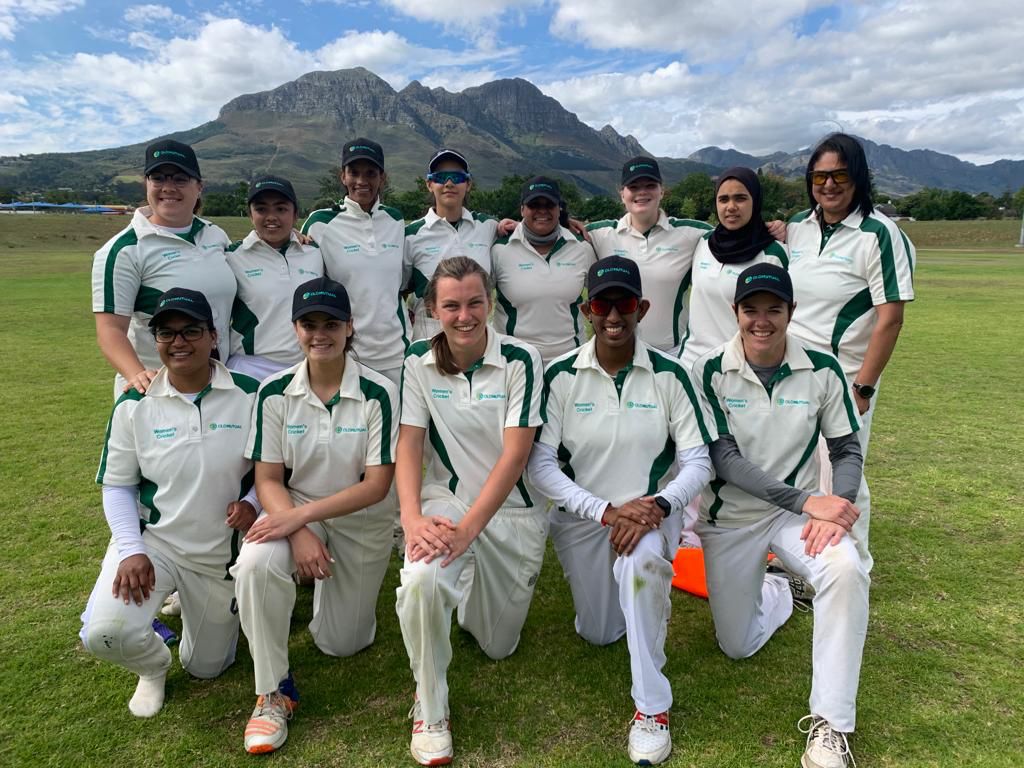
Tell us about your transition from player to coach.
My transition from player to coaching started in 2018 when the current coach of OMCC decided not to renew his contract with OMCC. Instead of looking for another coach and also wanting to progress the leadership and management of women’s cricket by women, the OMCC Committee met with me and offered me the coaching position.
They acknowledged that I could not only play but also teach, motivate, inspire and transform other young female cricketers. I’ve been coaching at OMCC for the past 3 seasons and look forward to continuing coaching at OMCC for the upcoming 4th season.
What has your experience coaching OMCC been like?
I could not have asked for anything better than to coach the OMCC women’s team. I say this with humility and with a great love for them. The group of ladies, comprising of a balance between age and experience, are not only passionate about cricket but they are always willing to listen, learn and participate in improving women’s cricket.
The talent, love, respect, comradeship and understanding this team has is not only amazing but it’s admirable. There is no ego amongst these girls but a genuine desire to bond, share and assist each other wherever possible.
The team currently consist of players ranging from the age of 13 to 40+; a very diverse (racially, culturally and theologically), eclectic and interesting group of girls and women.
The team shares the same values, attitude and approach when it comes to cricket. All are treated as equals irrespective of the cricketing experience each one has; and the diversity always brings something different to the team, which is excellent for perpetual and sustainable transformation.
What is the OMCC culture like?
OMCC provides all with a space that encourages open and honest communication and reinforces the importance of trust between individuals and the team as a collective.
By having implemented a code of active communication and the awareness and understanding that every player has something positive to contribute to the growth of the team (whether at practices or during and after each game), the club continuously flourishes.
As an initiative to further develop and reinforce cricket at OMCC, we’ve also had a Netherlands International player (Babette De Leede) join the club this past season.
She played in both the 50-over and 20-over formats. She now describes OMCC as her “new home away from home” and is looking forward to playing for the club again soon.
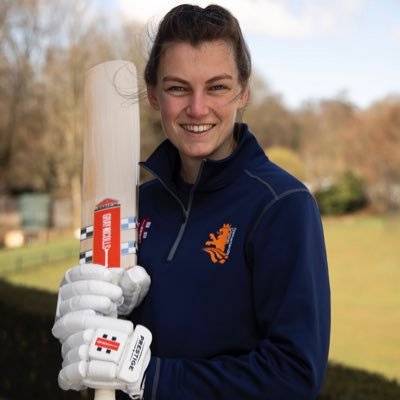
How do you improve and prepare players for the step up from club cricket to domestic cricket?
Preparing a player mentally is very important. Talent combined with confidence (not over-confidence) and a healthy attitude and approach to the game, enables a player instead of disabling them.
Before the commencement of a new season, players are requested to provide the coach with a SWOT (strengths, weakness, opportunities and threats) analysis of their previous season as well as a game plan for the upcoming season.
I do this to assess whether a player(s) has taken stock of the goals and plans they have set for themselves and what they’ve invested in doing during the season to achieve them.
Describe the strategy that you have used at OMCC.
The strategy I use and implement at OMCC is one of “self-awareness and consciousness”; a strategy where I do not coach after “every ball hit” and “every ball bowled”, but where I check in with the player during and after a practice session and ask if they know what slip-ups they may have made and what adjustments need to be made to improve and transform it.
This method and approach of coaching have paid off tremendous dividends for both the individual player(s) and the team overall.
Furthermore, my style of coaching also encourages and teaches players to be disciplined in what they do, invest extra effort and time in maintaining their form, and be accountable for decisions and choices they make at practises and during the games.
I know from experience, that clubs in Cape Town often struggle to get enough girls and women to make up a team and to field a team each week. How does your club deal with this?
OMCC does not and has never had a policy of “scouting for players”. Players (and parents) are drawn to the club as a result of the organisational culture it has, and how the committee, management, coach and players interact with each other both on and off the field.
The respect for each, the attitude and approach to dealing with challenges and the respect for the game itself, make OMCC one of the unique teams within the community of cricket.
What needs to be done to get better quality club cricket in the women’s game - not just in the premier league but also in the promotional league?
We need to look at creating more “off-season” programmes that not only promote women’s cricket but also become a vessel of encouraging more women to play the game.
We need to ensure that members of cricketing associations (including clubs) that are tasked to not only administer but also transform women’s cricket, be more supportive of women’s cricket on the field as opposed to off the field.
That means showing up at games and constructively monitoring the degree and level of improvement of women’s cricket from season to season. Coaches and players should know their roles and act respectfully toward each other and reinforce the “spirit of playing cricket” instead of grandstanding.
The commitment from male coaches that is invested in men’s cricket is equally needed for women’s cricket. We need to look at creating and maintaining profiles of women playing cricket whereby their season statistics can be monitored and their level of commitment is assessed.
We need to award girls/ladies that have cricketing talent, with an equal number of opportunities to play, practice and reinforce their game and skills. We need to have better-prepared facilities to play at.
We need to look at developing a particular programme where promotional league clubs can play against premier league clubs before the official season starts.
Furthermore, we need to consider a “seasonal exchange-like” programme where players from the promotional league can be provided with an opportunity to play at a club in the premier league.
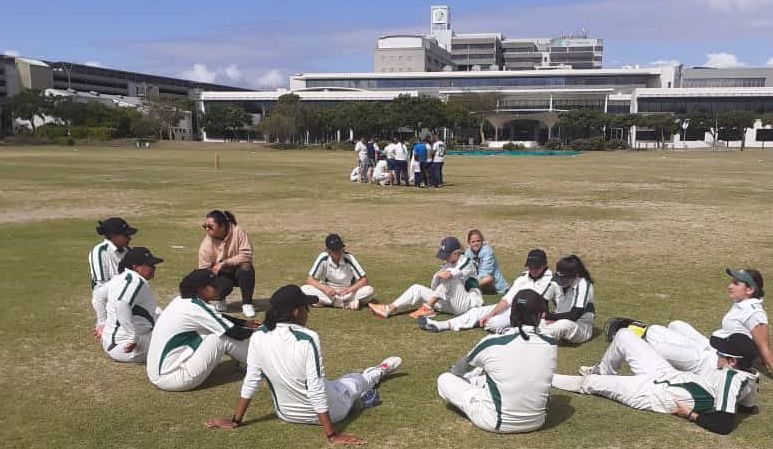
How much has the women’s game improved in Cape Town/South Africa (Schools, club, domestically etc.) and how much can it still improve?
In general, there has been a linear-like level of improvement from season to season. Women are being afforded more opportunities to participate and consider playing cricket at a school, club, provincial and national level.
The growth from amateur to professional status is also encouraging and enticing women to consider playing cricket; players are being provided with contracts (provincially and nationally), and national players are being sponsored and partaking in campaigns and advertisements that promote women’s cricket. There are also various international tournaments for women that take place annually, which never happened before.
However, there is still a huge need and desire for improvement. With the proper people spearheading programmes that not only focus on sustaining the development of women’s cricket, but women’s cricket could also shift from linear to exponential growth in the future.
What needs to be done for the women’s game to improve in Cape Town/South Africa?
Everything related to political influence and involvement, nepotism, bias, prejudice and self-gain should be eliminated from institutions, associations and organisations that are tasked with the affairs of developing and improving women’s cricket.
Transforming the “quota and scorecard” approach that both CSA and its affiliates within South Africa have adopted to supposedly even out the playing field to address the so-called “inequality” that still exists in women’s cricket should be critically re-assessed.
What it has created is an attitude of “entitlement” instead of “empowerment”. The question to be raised and seriously considered is “do we want to be identified and chosen based on being a white, black or black African cricket player” or “do we want to be identified and chosen based on being a South African cricket player”.
What do you suggest the language used should be to undergo a transformation if CSA and its affiliates want to promote and progress authentic improvement?
Involve more players to be part of the change that we want to see happen and take place. Women that are not part of the National or Provincial system or pipeline but may have previously been considered as potential players with skill and capacity, should not be forgotten and be provided with opportunities to participate in tournaments that take place every year.
Selectors need to attend and watch more women’s club cricket. A scorecard(s) only reflects a “number” and does not necessarily reflect the effort and performance of a particular player when on the field.
Actively promote women’s club cricket via social media platforms and radio. The women’s finals, for both Premier and Division A Leagues, are never formally advertised or promoted on any social media platform by the Association.
Furthermore, officials from the Association seldom avail themselves to attend women’s club cricket finals.
How has club cricket helped you in your journey and how do you implement that with the players that you coach?
I was an introvert and very uncomfortable with openly communicating with others. Having been involved in cricket has encouraged me to not fear communicating with others.
It’s assisted me in being more open to constructive criticism and embracing it as an opportunity to positively transform and create similar opportunities for others.
Hard work, commitment, being disciplined, being accountable for one’s actions and taking ownership of one’s choices build character and strength within.
Accepting diversity, having respect and appreciation for the next, and maintaining humility within irrespective of the event or circumstance, will add value to yourself and your fellow teammates. This is what I pass on to my players and teammates.
Now that you are a coach, how is it being on the other side?
I am currently a player coach, but a coach first as that is my core responsibility. Being a coach for the first time was a challenge for me but the support of the players and the OMCC committee made it a bit easier.
The upcoming 2022/23 season will be my 4th season coaching OMCC. I continue to appreciate and love this path and the journey I am currently bearing witness to.
Winning the 50-over and 20-over formats for season 2021/22 has been the highlight of my cricketing endeavours thus far. The team started with a loss playing their first fixture but excelled to win the remainder of the fixtures as well as the finals.
The team also ended at the top of the 20-over log after playing all fixtures.
It’s a sight to behold when a coach bears witness to how players play when they have goals set for themselves and then achieve those goals.
The joys of being a coach are seeing the individual players evolve and grow from strength to strength and the happiness that cricket brings to them. It’s seeing how they interact with each other and the genuine love and respect they have for each other.
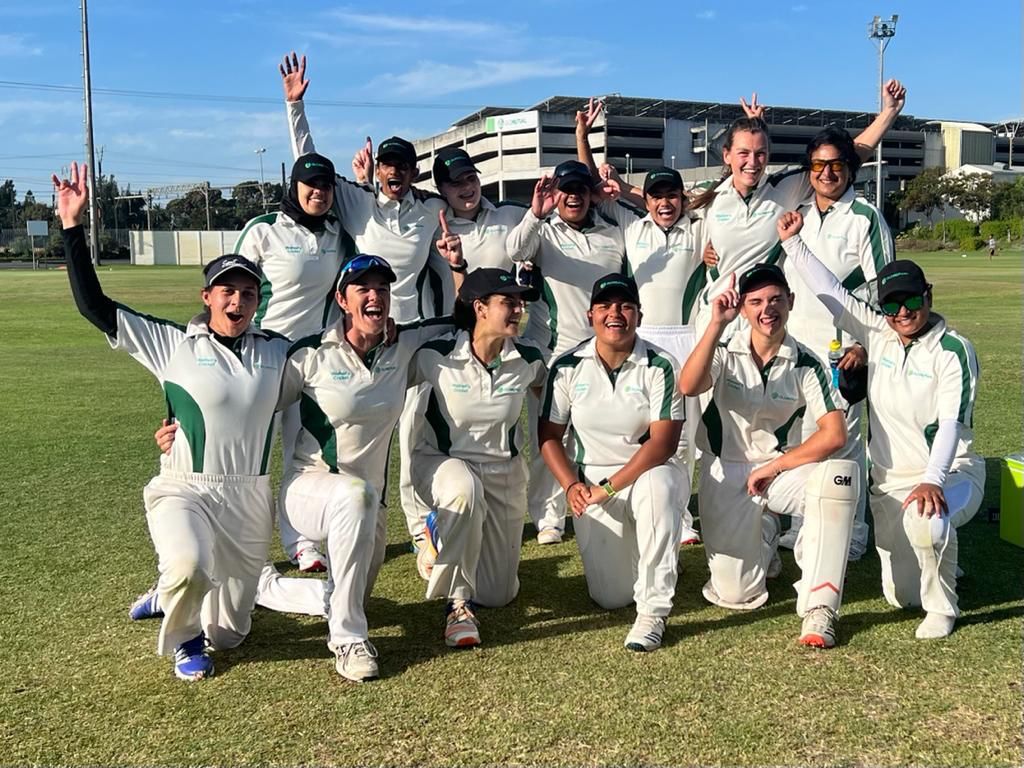
Offside Maidens
Daily Show | Let's talk about it
Video Playlist
The Podcast Live Show:
Exclusive Interviews
Crossword Puzzle
South Africans in IPL 2022
ISSUE 22: Crossword Answers
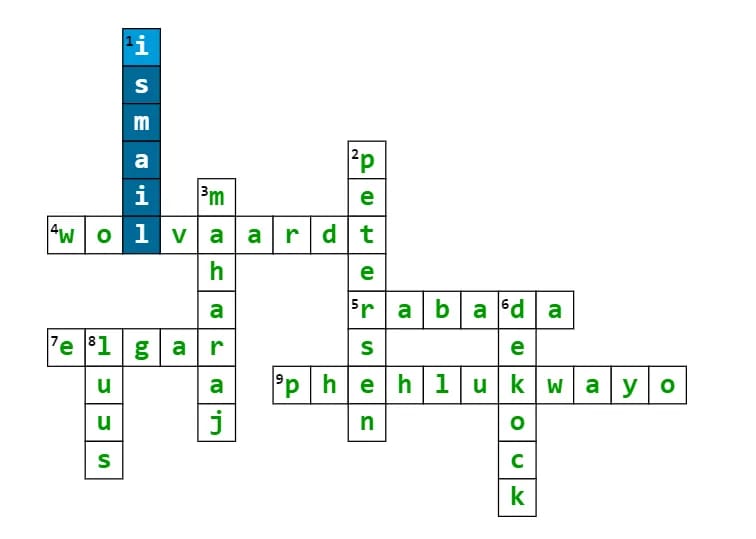

Magazine info
Editorial Director
Khalid Mohidin
IT and Technical Director
Faizel Mohidin
Contributors
Abhai Sawkar
Aditya Mehta
Chris Chiwanza
Craig Stirton
Emily Norris
Jessica October
Janine October
Khalid Mohidin
Licia Woods`
Lubabalo Skhosana
Marc Jacobson
Ongama Gcwabe
Tara-Lee
Graphics
Khalid Mohidin (Cover and Graphics)
Mohammed Hoosain (CFM logo)
Images
BackpagePix
Supplied
Twitter
Facebook
Video Binge List:
On Lockdown Series
The Podcast Show
Legends with Ravi
Daily Show